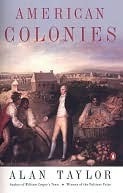Faced with a declining supply of white laborers, the Chesapeake planters increasingly turned to African slaves for their plantation labor. At the end of the seventeenth century, slaves became a better investment, as servants became scarcer and more expensive: £25 to £30 for a lifelong slave compared well with £15 to purchase just four years of a servant’s time. In addition, the moderating virulence of the local diseases increased life expectancy, which made planters more confident that their slaves would live and work long enough to repay their extra cost.
Welcome back. Just a moment while we sign you in to your Goodreads account.


